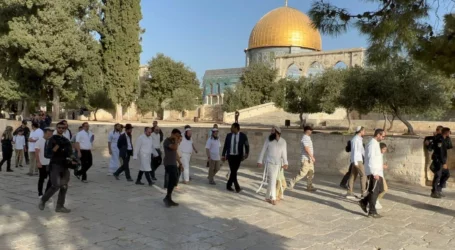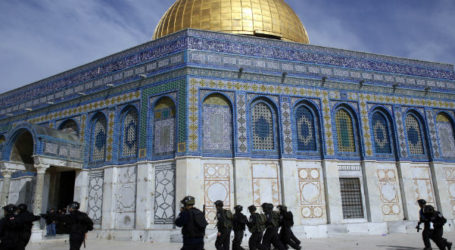SETTLERS BURN PALESTINIAN FARMLANDS IN WEST BANK
 West Bank, 19 Sha’ban 1434/28 June 2013 (MINA) – Villages of the Sabastia area, near the northern West Bank city of Nablus, have reported that a number of extremist Israeli settlers burnt, Thursday (27/6), Palestinian agricultural lands planted with Olive and Almond trees.
West Bank, 19 Sha’ban 1434/28 June 2013 (MINA) – Villages of the Sabastia area, near the northern West Bank city of Nablus, have reported that a number of extremist Israeli settlers burnt, Thursday (27/6), Palestinian agricultural lands planted with Olive and Almond trees.
Nael Ash-Sha’er, head of the Sabastia town council, stated that settlers of the Shave Shomron illegal settlement, built on lands that belong to Sabastia residents, set the Palestinian lands ablzae, and that the fire consumed dozens of trees, IMEMC reported as monitored by Mi’raj News Agency (MINA).
He added that the latest attack is part of ongoing and escalating attacks and violations carried out by extremist settlers, and that the area is a historic and archeological site subject to frequent Israeli violations.
Ash-Sha’er further stated that the settlers previously flooded Palestinian farmlands with wastewater, uprooted and burnt lands, and attacked several villagers.
Also on Thursday, a number of settlers hurled stones at a vehicle that belong to a resident of southern Hebron, in the southern part of the West Bank, and fired rounds of live ammunition into the air.
Rateb Jabour, coordinator of the Popular Committee against the Wall and Settlements in Yatta, near Hebron, told the Radio Bethlehem 2000 that the settlers threw stones at the car of resident Khaled Mahmoud Bheiss, 35, as he was driving at the Zeef intersection, south of Hebron.
The resident suffered minor cuts and bruises, and was moved to the Abu Al-Hasan Al-Qasem Hospital, in Yatta.
Jabour added that the settlers also fired rounds of live ammunition into the air, and fled the scene.
Nablus is a city in the northern West Bank, approximately 49 kilometers north of Jerusalem, with a population of 126,132. Located in a strategic position between Mount Ebal and Mount Gerizim, it is the capital of the Nablus Governorate and a Palestinian commercial and cultural center.
Founded by the Roman Emperor Vespasian in 72 CE as Flavia Neapolis, Nablus has been ruled by many empires over the course of its almost 2,000-year-long history.
In 636, Neapolis, along with most of Palestine, came under the rule of the Islamic Arab Caliphate of Umar ibn al-Khattab; its name Arabicized to Nablus. In 1099, the Crusaders took control of the city for less than a century, leaving its mixed Muslim. After Saladin’s Ayyubi controlled of the interior of Palestine in 1187, Islamic rule was reestablished, and continued under the Mamluk and Ottoman empires to follow.
Following its incorporation into the Ottoman empire in 1517, Nablus was designated capital of the Jabal Nablus (“Mount Nablus”) district. In 1657, after a series of upheavals, a number of Arab clans from the northern and eastern Levant were dispatched to the city to reassert Ottoman authority, and loyalty from among these clans staved off challenges to the empire’s authority by rival regional leaders, like Dhaher al-Omar in the 18th century, and Muhammad Ali—who briefly ruled Nablus—in the 19th century. When Ottoman rule was firmly reestablished in 1841, Nablus prospered as a center of trade.
After the loss of the city to British forces during World War I, Nablus was incorporated into the British Mandate of Palestine in 1922, and later designated to form part of the Arab state of Palestine under the 1947 UN partition plan. During the 1948 Arab-Israeli War the city was captured and occupied by Transjordan, which subsequently unilaterally annexed it, until its occupation by Israel during the 1967 Six Day War.
Today, the population is predominantly Muslim, with small Christian and Samaritan minorities. Since 1995, the city has been governed by the Palestinian National Authority. In the Old City, there are a number of sites of archaeological significance, spanning the 1st to 15th centuries. The city is known for its kanafeh, a popular sweet throughout the Middle East, and soap industry.(T/P03/P04)
Mi’raj News Agency (MINA)






